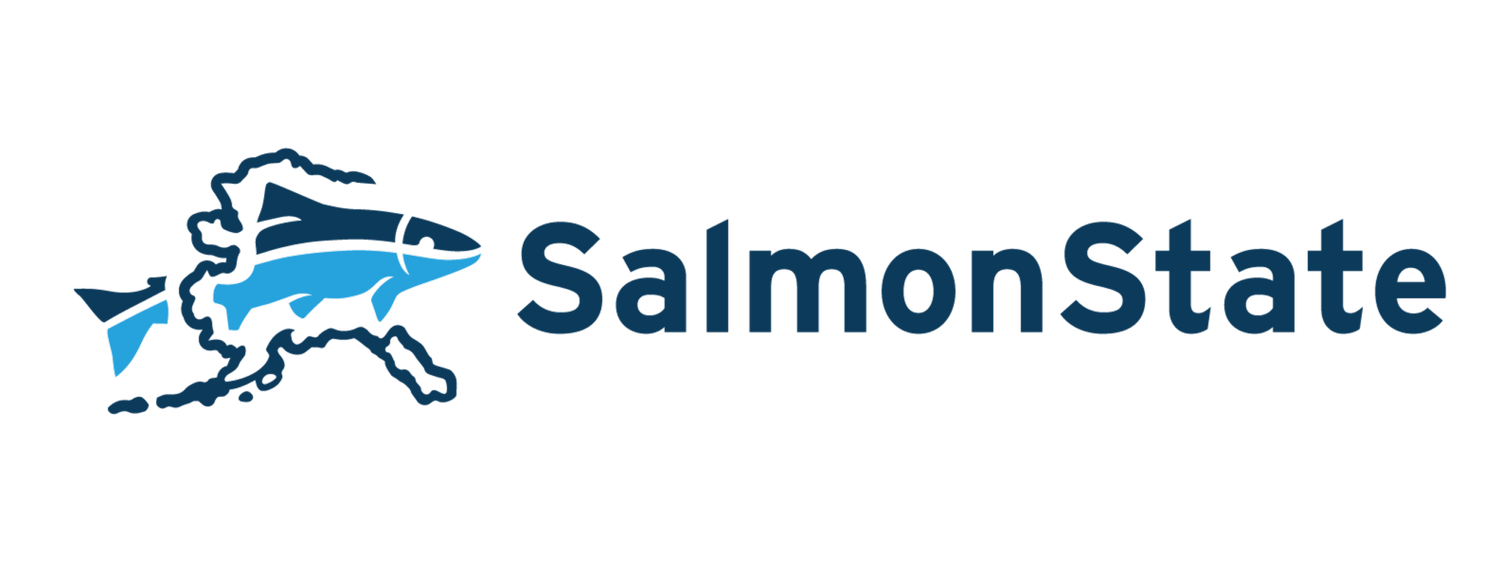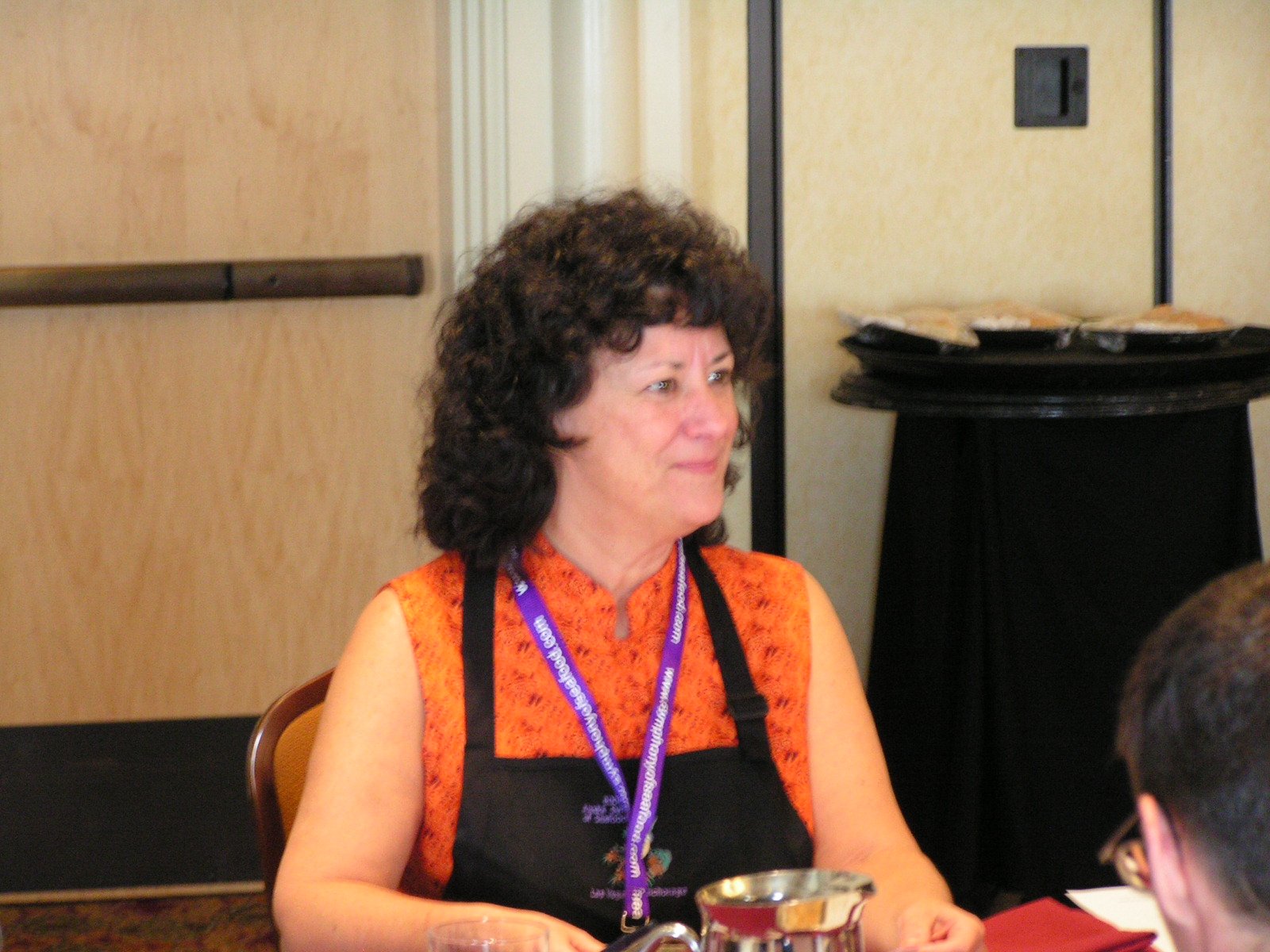Laine Welch
“I came to Alaska when I was 35 or 36, with an ex-husband who was a fisherman when the fisheries collapsed in New England. I was very immersed in fishing culture back there in New England. When I arrived I got a job at KMXT to produce their Alaska Fisheries report. It was an overview of fishing around the state.
My life was codfish, and flounders, and haddock, and lobsters. I had never even seen a salmon. What a shock! All of the sudden I arrived in Alaska, and there are five different species of salmon fished with different gears, at different times, all over the state. It was daunting. I had to make up things to keep the salmon straight. If you get socked in the eye it turns red. Your dog is your chum. Coho, Silver! Away! I would say “sixty million salmon caught at Bristol Bay!” and Fish & Game would call me and say “Laine, that was the run, not the catch.”
It was an incredible experience there, just doing that program. In retrospect, it’s the best thing I ever had to do, because it was an overview. It taught me everything from little herring spawn on kelp fisheries in Craig, to fisheries all the way up the coast in Kotzebue…. I had to be a quick study.
I was so lucky I never had to do anything but fish stories. My thing was fish, locally, state-wide, and that was it. And so it remained all these years. And I never tired of it. I learned something new every day. And I just feel so blessed that I have this fish beat in the most amazing fishery in the world.”
— Laine Welch, aka “Ms Fish,” of Fish Factor and Alaska Fish Radio
“When I first started in the late 1980s, Alaska was flush with oil money and I was able to go to a lot of North Pacific Council meetings, fish board meetings, and to interact with people who taught me so much. But I think it was traveling to places like Naknek, Juneau, Sitka — just being able to see the different operations — processing and catching operations around the state and how they differ from Kodiak. Kodiak, you look out and all you see is the Gulf of Alaska. And to see the little bays and everything throughout Southeast Alaska, and how the different processing operations conduct business — I just loved that. You think everything's the same, but it’s not, it’s so different depending on where you go. You go into Naknek before the start of the salmon fishery — there are so many freezer vans there that it looks like a city of skyscrapers. Kodiak is that way, too. You drive down our one road in Kodiak, and it’s a line with piled up freezer vans just waiting to be filled with all the different species we catch here, at the island. But going to Naknek and seeing — you’d have to crane your neck back as far as you could just to see the top of the pile of containers. It was just astounding to me. It really drove home the mammoth size of that fishery, and how much leaves there to go out to the world. It’s amazing.”
— Laine Welch, aka “Ms Fish,” of Fish Factor and Alaska Fish Radio
“My favorite stories to focus on are changing fish markets. How Alaska fits into the global world of trade, with seafood being one of the largest commodities traded around the world. For example, with salmon, Alaska thinks it’s the biggest show in town. But it’s only about 11% of the global market. Production of farmed salmon to wild salmon is 3 to 1. Luckily, Alaska has, in great part due to the fabulous work of the Alaska Seafood Marketing Institute, processors and fishermen, been able to create a brand separate from other wild-producing countries such as Canada, or Russia. Those production numbers affect the market for our fishermen. I really enjoy, whether it’s with salmon, cod, or other species, making people aware that they are a player in the global market.”
— Laine Welch, aka “Ms Fish,” of Fish Factor and Alaska Fish Radio
"Recently, I sat in on a public NOAA listening session on salmon bycatch. It’s just heart-wrenching to hear stories from Indigenous communities. And there were some elders saying “here our boats are on the beach, here we don’t have one salmon at our camps — nothing.” And yet, of course, the large trawlers are out there allowed to continue business as usual. It’s heartbreaking. They said “one of the few things that we do have control over is human behavior, and the amount of bycatch taken by the trawl fleet.” They pointed out the subsistence priority written into state and federal law. That subsistence priority has just been left on the beach.
We saw issues with trawl bycatch with the cod fishery collapse in 2018 here in Kodiak. Kodiak is so dependent on groundfish, and whitefish. Kodiak has the largest resident processing workforce of anywhere else in Alaska. And they start working on January 1, when the cod fishery starts. That’s what keeps Kodiak running, is whitefish.
When the cod crashed, people were outraged. Here are small boat fishing fleets tied up to the dock, and yet trawlers were allowed to take x amount of cod as bycatch.
The fact that so many of these boats are Seattle owned, and yet they’re able to come here and fish business as usual while Indigenous communities are beached? Boy, did that ever drive the bycatch issue into the stratosphere.
And Alaska Native groups were pointing out that one thing we do have control over is how much salmon is being taken by the big boat trawl fleet.
They don’t even have a cap on trawl bycatch of chums. The most recent number I’ve seen is well over 500,000. 50,000 Chinook. That’s 50,000 Chinook that aren’t breeding. They’re not laying eggs. They’re just gone. There has to be a better way."
— Laine Welch, aka “Ms Fish,” of Fish Factor and Alaska Fish Radio
"One of the things I'm really interested in focusing on is how much opportunity there is for Alaska to more fully utilize the fish. Other protein industries — they have a philosophy. ‘From the rooter to the tooter.’ They utilize every single part of the animal. The feet, the lips, the internal organs. Everything. And here in Alaska, for the most part, what we’re taking for salmon is maybe 35%. And the rest of the animal is ground and dumped. I just find that unacceptable. And I know the processors will say we don’t have the money to invest in a new processing line, that it’s too far from the market. I don’t think that applies today. It’s sad, because I really believe in many ways Alaska is getting left behind.
Iceland has received three U.S. grants to create cod skin bandages for the military — because collagen helps natural, healthy healing of human tissue. I asked Dan Lesh of McKinley Research Group how much collagen is in cod skin. He said about 10%. Salmon is closer to 15%. There is one plant in Alaska, in Dutch Harbor, owned by a Japanese company, and they have a collagen-extracting machine there. They extract the collagen and send it to Japan for use in the cosmetic industry.
I spoke to a USDA scientist 20, 25 years ago about the uses of collagen. The skins don't even need to be refrigerated. They can be dried, kept in a warehouse, shipped out, rehydrated and the collagen extracted. The collagen market value is more than $8 billion.
ASMI did a report about five years ago on specialty products. They talked about the use of salmon heads, for example. Salmon heads in China get almost $5 a pound at retail. Skins and oils of underutilized species like sculpin could at a minimum add $700 million more to Alaska’s income from our resource, just utilizing the items they highlighted. They talk about how these products are used in other countries, roadblocks for Alaska, and ways that Alaska could get over these roadblocks, mainly by cooperative gathering of these parts and shipping them out to different markets.
I hope to raise some more visibility about the potential in Alaska for that, and talk with some of the big processors. To ask ‘What is wrong with this picture? Why are we not doing what they are doing in Iceland, Norway, other major fish-producing nations?”
— Laine Welch, aka “Ms Fish,” of Fish Factor and Alaska Fish Radio
“I really made the right decision to retire from radio and to keep writing my column. It was the daily deadlines that were dragging me down. When I decided to keep my column I felt this sense of joy. I can remain involved, continue to track all this fish news, and have this voice I’ve created over the years.
I just sit up here in my little home office overlooking Kodiak and it’s easy to forget the impact I can have. I have almost 20 papers across Alaska, and three nationals. And I have a new blog — alaskafish.news. I’ll add information that I see in my daily fish news scanning, and commentary based on past stories I’ve done and research I’ve seen. And sometimes I’ll write my own things.
— Laine Welch, aka “Ms Fish,” of Fish Factor and Alaska Fish Radio








